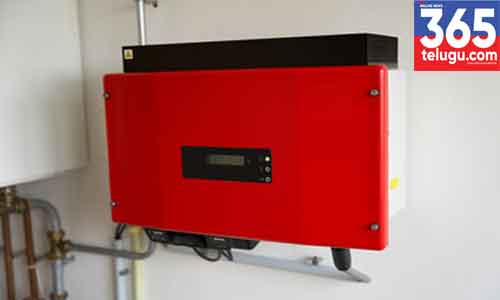365Telugu.com online news, Hyderabad,April 15th,2023: Here are some interesting facts about inverters. An inverter is an electronic device that converts DC (direct current) power into AC (alternating current) power. Inverters are commonly used in applications where AC power is needed, but the power source is DC.
For example, solar panels and batteries produce DC power, but most household appliances and electronics require AC power to operate.
Inverters work by taking the DC power input and converting it into an AC waveform that can be used by appliances and electronics. There are two types of inverters: pure sine wave inverters and modified sine wave inverters.

Pure sine wave inverters produce a smooth and clean AC waveform that closely matches the power from the grid, while modified sine wave inverters produce a less smooth and less clean waveform.
Inverters are used in a variety of applications, including RVs, boats, and off-grid homes. They are also used in emergency backup systems to provide power during power outages. In recent years, the use of inverters in conjunction with solar panels has become increasingly popular as a way to generate and use clean, renewable energy.
There are two main types of inverters: pure sine wave inverters and modified sine wave inverters.

Pure Sine Wave Inverter: A pure sine wave inverter produces a smooth and clean AC waveform that closely matches the power from the grid. This type of inverter is ideal for sensitive electronics, such as computers, medical equipment, and audio equipment, as it produces a high-quality output voltage that is free from harmonic distortion. Pure sine wave inverters are typically more expensive than modified sine wave inverters.
Modified Sine Wave Inverter: A modified sine wave inverter produces a waveform that is less smooth and less clean than a pure sine wave inverter. This type of inverter is suitable for most common household appliances and electronics, such as lights, fans, and kitchen appliances. Modified sine wave inverters are typically less expensive than pure sine wave inverters.
There are also some other types of inverters such as Grid Tie Inverters, Off-Grid Inverters, Micro Inverters, etc. However, the main two types of inverters are Pure Sine Wave Inverters and Modified Sine Wave Inverters.
The first inverters were developed in the early 20th century to convert DC power to AC power for early radio equipment. Inverters are used in a variety of applications, including renewable energy systems, backup power systems, and transportation, such as hybrid and electric vehicles.
Pure sine wave inverters are more efficient than modified sine wave inverters and can extend the lifespan of appliances and electronics. Inverters can be used in conjunction with batteries to store and use energy from renewable sources, such as solar panels and wind turbines.

Inverters can produce harmonic distortion, which can cause interference with other electronics and appliances. This is why it’s important to choose an inverter with a low total harmonic distortion (THD) rating.
Inverter technology is constantly evolving, with advancements being made in efficiency, size, and features. Inverters are an important component of the smart grid, helping to regulate and control the flow of electricity from renewable energy sources into the grid.
Overall, inverters play a critical role in our modern world, helping us to generate and use clean, renewable energy and power our homes and businesses.

